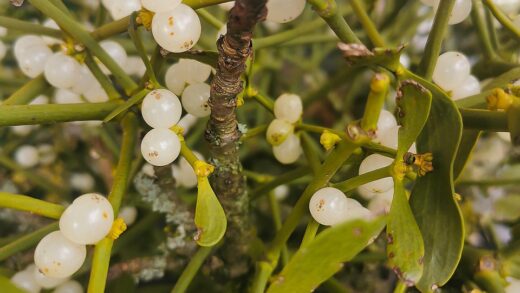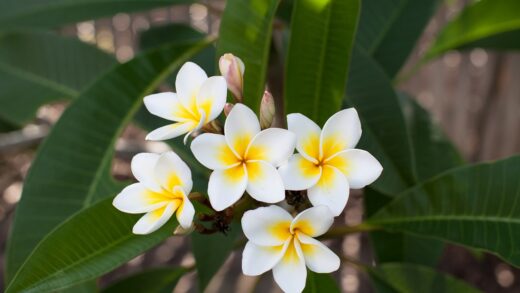Bluebeard is a shrub that truly embodies the principle of “less is more” when it comes to nutrition. It is naturally adapted to thrive in soils of average to low fertility and does not require a rich, heavily amended environment to produce its spectacular late-season display. In fact, over-fertilizing is one of the most common mistakes gardeners make, often leading to disappointing results. Understanding the plant’s modest nutrient needs and the proper way to supplement them is key to achieving a perfect balance of healthy growth and abundant, vibrant flowers.
The primary danger of excessive fertilization, particularly with nitrogen-heavy formulas, is that it stimulates the plant to produce an overabundance of lush, green foliage at the direct expense of its flowers. While the shrub may look large and healthy, it will produce sparse, weak blooms, defeating the very purpose for which it is grown. The goal is to provide just enough nutrition to support steady, healthy development without pushing excessive vegetative growth. This balanced approach ensures the plant directs its energy where it matters most: into creating a stunning floral show.
In most garden soils, a single application of a balanced fertilizer in the spring is all that is necessary to support the bluebeard for the entire growing season. Many gardeners find that simply top-dressing the soil with a layer of compost annually provides all the nutrients the plant requires. This slow, natural release of nutrients mimics the conditions the plant is adapted to and helps to build healthy soil structure over time. This sustainable approach is often superior to the use of synthetic chemical fertilizers.
Before applying any fertilizer, it is wise to have a basic understanding of your soil’s composition. A simple soil test can reveal the existing pH and nutrient levels, allowing you to make informed decisions rather than guessing. Bluebeard prefers a neutral to slightly alkaline pH, and if your soil is highly acidic, correcting the pH may be more beneficial than adding fertilizer. Ultimately, providing the right growing conditions—full sun and excellent drainage—is far more important for the health of your bluebeard than an intensive feeding regimen.
Assessing your soil’s fertility
Before you reach for a bag of fertilizer, take the time to assess the existing fertility of your garden soil. Many soils, especially those that have been gardened in for years and amended with organic matter, already contain sufficient nutrients to support a low-demand plant like bluebeard. You can get a general sense of your soil’s health by its appearance and texture. Healthy soil is typically dark and crumbly, smells earthy, and supports a healthy population of earthworms and other organisms. If your soil looks like this, your bluebeard may not need any supplemental fertilizer at all.
More articles on this topic
For a more precise understanding, a professional soil test is an invaluable tool. These tests, often available through local agricultural extension services, provide a detailed analysis of your soil’s nutrient content, including levels of nitrogen, phosphorus, and potassium, as well as the soil’s pH. This information allows you to move beyond guesswork and apply only the nutrients that are actually deficient. For example, the test might reveal that your soil has adequate phosphorus and potassium but is low in nitrogen, allowing you to choose a fertilizer that specifically addresses that need.
Understanding your soil’s pH is just as important as knowing its nutrient levels. Bluebeard performs best in a pH range that is neutral to slightly alkaline (around 6.5 to 7.5). If your soil is too acidic, the plant may be unable to absorb available nutrients, even if they are present in the soil. An acidic soil can lead to symptoms of nutrient deficiency, such as yellowing leaves, even in a well-fertilized garden. If a soil test indicates a low pH, an application of garden lime can help to raise it to a more appropriate level for your bluebeard.
If you opt not to perform a soil test, a conservative approach is always best. You can assume your soil is of average fertility and proceed with a minimal fertilization plan. Applying a layer of well-rotted compost around the base of the plant each spring is a safe and effective way to provide a slow release of a broad spectrum of nutrients. This method has the added benefit of improving soil structure and water retention, addressing multiple aspects of the plant’s health simultaneously.
The role of essential macronutrients
To make informed decisions about fertilization, it is helpful to understand the basic roles of the three primary macronutrients, which are represented by the N-P-K numbers on fertilizer packaging. Nitrogen (N) is the nutrient most responsible for vegetative growth, meaning the development of leaves and stems. For bluebeard, a plant grown for its flowers, an excess of nitrogen is detrimental. Too much nitrogen will result in a large, leafy shrub with very few flowers, as the plant’s energy is diverted away from reproduction (flowering) and towards foliage production.
More articles on this topic
Phosphorus (P) plays a crucial role in a wide range of plant functions, including root development, energy transfer, and, most importantly for bluebeard, the production of flowers and fruits. A sufficient supply of phosphorus is essential for ensuring a robust bloom set. Fertilizers formulated for flowering plants, often called “bloom boosters,” typically have a higher middle number (P) to support this function. However, most soils have adequate phosphorus, and adding more when it isn’t needed can lead to environmental pollution as it leaches into waterways.
Potassium (K) is the third major macronutrient, and it is vital for the overall vigor and resilience of the plant. It helps regulate water movement within the plant, strengthens cell walls, and enhances the plant’s ability to withstand stress from drought, heat, cold, and disease. A balanced supply of potassium contributes to a sturdy, healthy plant that is better equipped to support a heavy load of flowers and fend off potential health issues. It is a key component for overall plant hardiness and long-term health.
For bluebeard, the ideal fertilizer is one that is balanced or slightly lower in nitrogen and higher in phosphorus and potassium. A general-purpose granular fertilizer with a ratio like 5-10-10 or 10-10-10 is often a suitable choice. However, the best approach is often to forgo synthetic fertilizers altogether in favor of organic amendments. Compost and well-rotted manure provide these macronutrients in a slow-release form that is less likely to overwhelm the plant, while also supplying essential micronutrients and improving soil health.
Choosing the right type of fertilizer
When it comes to fertilizing bluebeard, you have several options, each with its own advantages. Organic amendments, such as compost and well-rotted manure, are often the best choice. These materials release nutrients slowly as they are broken down by soil microorganisms, which prevents the sudden surge of growth that can be caused by synthetic fertilizers. This slow-release action provides a steady supply of nutrients throughout the growing season. Furthermore, organic matter improves soil structure, drainage, and moisture retention, offering benefits far beyond simple nutrition.
If you choose to use a granular synthetic fertilizer, opt for a slow-release formulation. These products are designed with coated pellets that dissolve gradually over a period of months, providing a more controlled and sustained release of nutrients than their quick-release counterparts. A balanced formula, such as a 10-10-10, applied sparingly in the spring, is usually sufficient. Always follow the application rates recommended on the product packaging, as applying too much can damage the plant’s roots and negatively impact its flowering.
Liquid fertilizers are another option, though they are generally less ideal for shrubs like bluebeard. These are mixed with water and applied during irrigation, providing a quick boost of nutrients. While this can be useful for container-grown plants or for correcting a specific, identified nutrient deficiency, their effects are short-lived, and they can easily encourage the kind of weak, excessive growth you want to avoid. If you do use a liquid fertilizer, it should be heavily diluted and used only once or twice early in the growing season.
Ultimately, for an in-ground bluebeard shrub in reasonably healthy soil, the simplest and most effective approach is to rely on organic matter. A top-dressing of compost applied each spring after the annual pruning provides a gentle and complete source of nutrition that supports healthy, balanced growth. This method avoids the risks associated with over-fertilizing with synthetic products and contributes to the long-term health and fertility of your entire garden ecosystem. It is a sustainable practice that benefits both the plant and the soil.
Application timing and techniques
The timing of fertilizer application is just as important as the type of fertilizer you choose. For bluebeard, the ideal and generally only time to fertilize is in the early spring. This application should be done just as new growth begins to emerge, often coinciding with the time of the annual hard pruning. Fertilizing at this stage provides the plant with the necessary resources to support the rapid development of the new stems that will ultimately bear the season’s flowers.
Avoid fertilizing your bluebeard in the late summer or autumn. Applying fertilizer, especially one containing nitrogen, late in the season can stimulate a new flush of tender growth. This new growth will not have sufficient time to harden off before the first frosts arrive and will be highly susceptible to winter damage. This can weaken the plant and negatively impact its health and performance in the following year. The plant should be encouraged to slow its growth and enter its natural dormant state as winter approaches.
When applying granular fertilizer or compost, ensure you do so correctly to maximize its effectiveness and prevent damage to the plant. The nutrients should be spread evenly on the soil surface around the base of the shrub, extending out to the dripline (the imaginary line on the ground corresponding to the outermost reach of the branches). Avoid piling fertilizer or compost directly against the main stem of the plant, as this can trap moisture and lead to rot.
After applying a dry fertilizer, it is important to gently work it into the top few inches of soil with a cultivator or your hands. This helps to bring the nutrients into contact with the soil and makes them more readily available to the plant’s roots. Following the application, water the area thoroughly. This watering serves two purposes: it helps to dissolve the fertilizer and carry it down into the root zone, and it prevents the concentrated fertilizer salts from burning the plant’s roots.


















